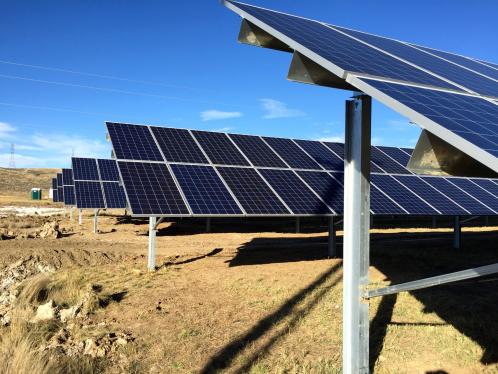 By Kent Singer, Executive Director
By Kent Singer, Executive Director
How will the continuing decline in the cost of solar power impact Colorado’s electric co-ops and other electric utilities? That’s an important question and one that was addressed at the 2016 Solar Power Colorado conference March 7-9, an event hosted by the Colorado Solar Energy Industries Association.
I was there to learn about the latest developments in solar power and network with solar advocates, developers and vendors. Electric co-ops are integrating a variety of solar power projects across Colorado, and the Colorado Rural Electric Association makes a concerted effort to stay on top of this dynamic element of the power industry.
The CoSEIA conference grew over the last several years with this year’s attendance exceeding 500 people representing all aspects of the solar ecosphere. The conference this year featured several speakers who addressed issues including net metering policies, new utility models and trends in community solar.
There was discussion during the conference about net metering and how different states are adjusting their net metering policies. If you recall my column in January, I described in some detail how net metering works. Basically, the Colorado law relating to net metering requires co-ops to give their member-owners credit for the renewable power generated on the member-owners’ premises (usually from rooftop solar panels). When the electricity from the member-owner offsets electricity consumption, the member-owner receives the full retail value of the electricity generated; in the event of excess electricity, the co-op has flexibility to determine the value of that electricity.
Many states are re-evaluating how utilities are required to compensate customers with onsite generation, such as solar panels. Some utilities have successfully argued that net-metered customers should pay a fee for the right to interconnect to utility facilities since the utility is essentially acting as a battery for the customer, and there is value associated with that service. Other utilities increased their monthly service charges to their customers to make up for the fact that they are no longer collecting all of their fixed costs with the reduction of kilowatt-hour sales.
Many of the folks attending the CoSEIA conference argued against any kind of “barrier” to the installation of solar panels, such as the fees described in the preceding paragraph. But from the cooperative perspective, this is a matter of fairness. We support rooftop solar installations by our member-owners, but we have an obligation to all of our members, including those who cannot afford the solar installations, to make sure that system costs are allocated in a fair manner. We also have an obligation to minimize overall systems costs, and in many cases that means that community solar arrays are more cost effective than rooftop solar.
There is no question that the decreasing costs for solar power generation are impacting power supply decisions by all utilities, including electric co-ops. One of our members, Tri-State Generation and Transmission Association, recently announced the addition of a second utility-scale solar project to its portfolio. Tri-State will purchase the entire output of the Alta Luna Solar Project, a 25-megawatt solar farm in southwestern New Mexico. This is in addition to the 30-MW Cimarron Solar facility that is already generating electricity for Tri-State. Tri-State also recently announced another power purchase agreement for the 30-MW San Isabel Solar Project to be constructed in southern Colorado.
In addition to these utility-scale projects, a group of Colorado co-ops (Delta-Montrose Electric Association, Gunnison County Electric Association, Holy Cross Energy, San Miguel Power Association and Yampa Valley Electric Association) agreed to partner with the Colorado Energy Office in support of community solar arrays that will benefit low-income co-op member-owners. Following on the success of the Grand Valley Power project, a nonprofit called GRID Alternatives is working with the CEO and the co-ops to build separate community solar projects to reduce costs for customers who spend more than 4 percent of their income on utility bills. We’re glad to work with these partners on a program that will benefit those who would otherwise not be able to afford a solar installation.
Rooftop, community, utility-scale: Solar generation resources are being added by Colorado’s electric co-ops at a record clip. And while our number one job is to maintain a system of power supply and delivery that serves our member-owners reliably and affordably, we are looking to the future and how we can better utilize the power from the sun as part of the co-op story.

